Galaxy S8 vs Galaxy S6: What’s the difference?
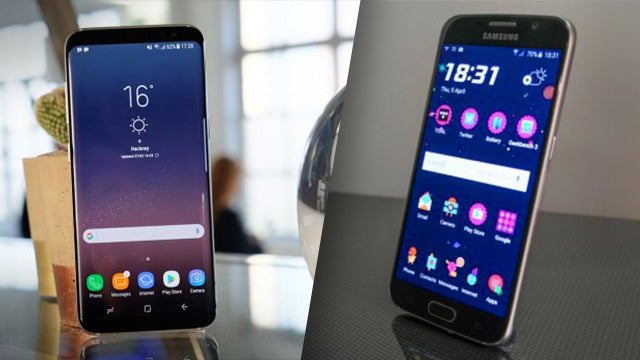
Galaxy S8 vs Galaxy S6: What’s changed in the two years since the Galaxy S6 arrived? We take a look at how the newly launched Galaxy S8 compares to the Galaxy S6.
Samsung has finally gifted the masses with a new flagship smartphone in the form of the Galaxy S8, and it’s looking like this could be the phone of the year – unless Apple manages to top it with the iPhone 8.
And it’s not the first time Samsung has managed to impress with its Galaxy S series, introducing the best smartphone of 2016 with the Galaxy S7.
But before that, even, the South Korean firm launched the Galaxy S6. Times have changed since then, of course, but by just how much? Allow us to explain.
If you can’t be bothered to read the full article, we’ve included a short summary of what you need to know at the bottom of this page.
Related: Best Android phones
Samsung Galaxy S8 vs Galaxy S6 Design – What’s the difference?
Although there’s only one phone between the S6 and the S8, the two handsets look very different. Samsung has redesigned the Galaxy S this year, getting rid of the home button, reducing the bezels, and adding what it calls an ‘Infinity Display’. That basically means the screen’s a bit bigger.
Of course, removing the home button means the fingerprint sensor has been relocated to the back of the phone, which may or may not be an issue. We’re sure you’ll get used to it eventually, though.
The body is slightly larger than the Galaxy S6, which measures 143.4 x 70.5 x 6.8mm, with a 5.1-inch screen. The Galaxy S8, on the other hand, comes in at 148.9 x 68.1 x 8.0mm, with a whopping 5.8-inch display. The S6 has your standard bezels and home button, so the screen was always going to be smaller. But it’s also a slimmer design, so if you like your phones easy to hold, the older handset has an edge here.
Related: Galaxy S8 vs iPhone 7
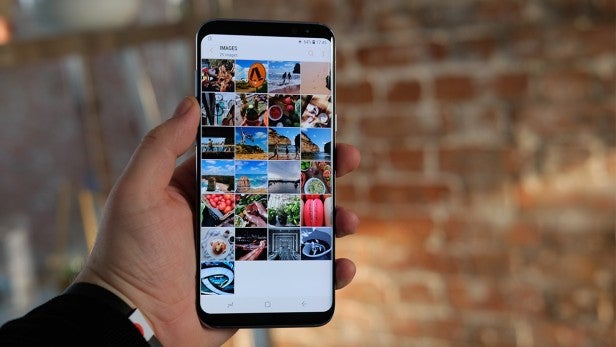 Samsung Galaxy S8
Samsung Galaxy S8
And whereas the S6 arrived alongside a more curvy Galaxy S6 Edge model, both the Galaxy S8 and S8+ feature Samsung’s curved ‘Edge’-style display – hence the ‘+’ branding on the larger model this year. Unfortunately, the newer phones also weigh more than their predecessors. The Galaxy S8 and Galaxy S8+ weigh 155g and 175g respectively, while the S6 and S6 Edge weigh 138g and 132g respectively. Yes, the standard model weighs more than the Edge version – Sammy wasn’t in the habit of enlarging the extra model at that point.
In terms of colour, the Samsung Galaxy S8 is available in the UK in black, blue, and silver, while the S6 comes in White, Black, Gold, or Green.
There’s no question the newer phones look a lot better than the S6 and S6 Edge. While the latter are by no means ugly, Samsung’s latest design is undeniably eye-catching, and a represents a nice dose of innovation for the smartphone market, just when it needed it most.
Related: Galaxy S8 vs S8+
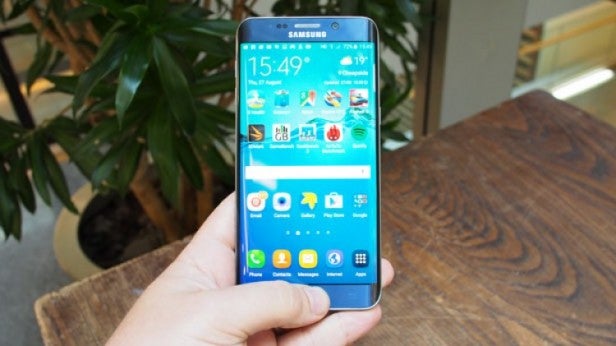 The S6 Edge
The S6 Edge
Here’s our Mobile Editor Max Parker’s take on the new design:
“While the backs are similar, it’s all-change around the front for the S8 – and boy is this a gorgeous phone. The sloping sides, a screen that stretches almost to each corner of the phone, plus subtle colour choices combine to make this the best-looking phone I’ve seen. The S7 was simple, but the S8 takes it to a whole different level”
Related: Galaxy S8 vs Galaxy S7
Samsung Galaxy S8 vs Galaxy S6 Specs – How much more powerful is the Galaxy S8?
As mentioned, the S8 comes with a much larger display. You’ll find a 5.8-inch Super AMOLED panel on the Galaxy S8, while the Galaxy S8+ comes with a bigger 6.2-inch screen. That’s a significant increase over the 5.1-inch display on the S6 and S6 Edge.
It also means you get a slightly weird and wider 18.5:9 aspect ratio, on the new phones, with a QHD+ screen resolution of 2960 x 1440 pixels. The older S6 and S6 Edge came with an almost as impressive 2560 x 1440 resolution, which is even more impressive considering the phone is two years old. It’s not quite up to S8, standards, though, but it is a Super AMOLED panel, so blacks will be deep, and colours vibrant.
 The Galaxy S6
The Galaxy S6
Things are a little more uneven on the processor side of things. The Galaxy S8 and S8+’s processors are built on a much more efficient 10nm process, whereas the older S6 and S6 Edge use chips built on the 14nm process. That means the new phone is 10% faster than the Galaxy S7, and considerably faster than the S6 – though you’re not going to notice a massive difference in day-to-day use.
Specifically the S8 uses either a Qualcomm Snapdragon 835 or Exynos 8995 chip with 4GB of RAM and 64GB of storage. The S6, on the other hand, comes with Samsung’s older Exynos 7420 with 3GB of RAM and either 32,64, or 128GB internal storage. One thing the S8’s got going for it here is the addition of a Micro SD card slot for expanding the memory – a feature Samsung removed from the Galaxy S6.
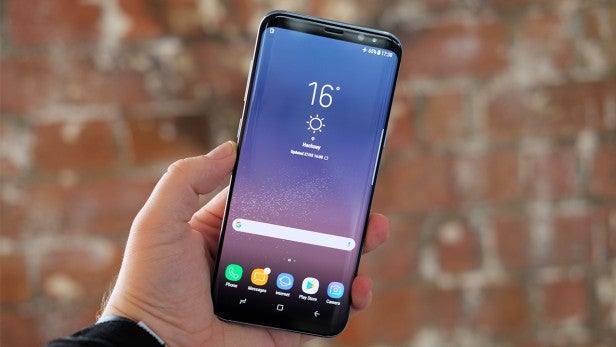 Samsung Galaxy S8
Samsung Galaxy S8
Camera-wise, the S8 packs a 12-megapixel DualPixel shooter on its back, with a wide f/1.7 aperture and optical image stabilisation (OIS). The front camera offers 8 megapixels, a f/1.7 aperture, and autofocus. That’s a significantly better offering than what you get on the S6 (16-megapixel, f/1.9 aperture, OIS on the back, 5-megapixel, f/1.9 on the front) even if not much has changed from the Galaxy S7.
It may seem like the megapixel count clinches it for the S6, and it’s certainly a decent camera, but the dual pixels and wider aperture on the S8 make for much better low light performance, while a new multi-frame image processing feature means the S8 takes three shots when you hit the shutter, combining them to reduce blur in your photos.
Other features on the S8 include an IP68-rated waterproof body, which means you can submerge the phone in up to 10 metres of water for 30 minutes, and wireless charging. The micro-USB on the S6 has been switched out for the more versatile USB Type-C port, and there’s an iris scanner on the front of the S8. No such luck with the S6.
When it comes to batteries, the Galaxy S8 uses a 3,000mAh cell, that should provide enough power to keep the phone going all day. We’re yet to the S8 out in full, though, so we’ll have to reserve judgement at this point. The 2550mAh battery in the S6 only offered so-so battery life, however.
And finally, Android 7.0 Nougat is the operating system of choice for the Galaxy S8, which will soon be available on the S6 and S6 Edge. However, the S8 will have a bunch of new features such as Samsung’s custom Bixby digital assistant – a rival to Siri and Google Assistant that offers some impressive-sounding features. We’re yet to test it out, however, so stay tuned for more.
For a full spec comparison, check out the table below:
| Samsung Galaxy S8 | Samsung Galaxy S6 | |
|---|---|---|
| Screen | 5.8 inches (Super AMOLED) | 5.1 inches (Super AMOLED) |
| Display Resolution | 2960 x 1440 (567ppi) | 2560 x 1440 (577ppi) |
| Aspect Ratio | 18.5:9 | 16:9 |
| Primary Camera | 12 megapixels | f/1.7 | OIS | 16 megapixels | f/1.9 | OIS |
| Secondary Camera | 8 megapixels | f/1.7 | AF | 5 megapixels | f/1.9 |
| Chipset | Snapdragon 835 (10nm) or Exynos 8995 (10nm) | Exynos 7420 (14nm) |
| RAM | 4GB | 3GB |
| Storage | 64GB | 32/64/128GB |
| Battery Capacity | 3000mAh | 2550mAh |
| Waterproof? | Yes (IP68 certified) | No |
| Fingerprint Scanner? | Yes | Yes |
| Headphone Jack? | Yes | Yes |
| Primary Port | USB Type C | Micro USB |
| Iris Scanner? | Yes | No |
| Wireless Charging? | Yes | Yes (in some markets) |
| Micro SD Slot? | Yes | No |
| Dimensions | 148.9 x 68.1 x 8.0mm | 143.4 x 70.5 x 6.8mm |
| Weight | 155g | 138g |
| Software | Android 7.0 Nougat | Upgradeable to Android 7.0 Nougat |
Related: Best Android apps
Samsung Galaxy S8 vs Galaxy S6 Price – Which phone is better value for money?
The Samsung Galaxy S6 has been around for a while, so naturally it’s going to be a lot cheaper than the newly launched S8 and S8+. Right now you can pick up the S6 for around £430 SIM-free and the S6 Edge for about £530.
Samsung has confirmed that the Galaxy S8 will start from £689, while the Galaxy S8+ will cost an even loftier £779 when they both launch on April 28 in the UK (April 21 in the US). That’s a lot to pay for a smartphone, but there’s no doubt you’re getting your money’s worth. This is likely to be the best phone available at this stage of 2017.
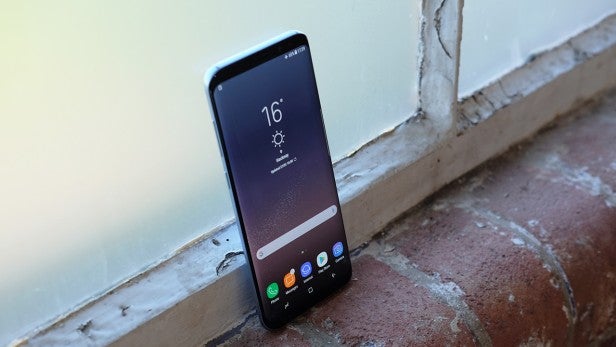 Samsung Galaxy S8
Samsung Galaxy S8
Related: Best smartphones
Samsung Galaxy S8 vs Galaxy S6 Summary – What’s the difference?
Here’s what you need to know about the Samsung Galaxy S8, and how it’s different from the Galaxy S7.
Design: The all-screen front, glass design, and overall sleekness of the S8 makes the S6 look like a relic. There’s no doubt the S6 is a decent-looking phone, but it doesn’t come close to the newer model.
Specs: With an ‘Edge’-style QHD+ screen, a speedy 10nm processor, and loads of extra features, such as an iris scanner, USB Type-C and a rear-mounted fingerprint sensor, the S8 takes this one easily.
Price: The Samsung Galaxy S8 will cost £689 and the S8+ £779, while the S6 can be picked up for around £430 SIM-free and the S6 Edge for about £530.
Value: If you want a decent Android phone for under £500 the S6 is a solid handset, but you’d be better going with something like the OnePlus 3T, which has newer hardware and costs around £400. The S8 is definitely expensive, but it’s clearly an outstanding phone.
Tell us what you think of the new Samsung Galaxy S8 and Samsung Galaxy S8+ in the comments below.

